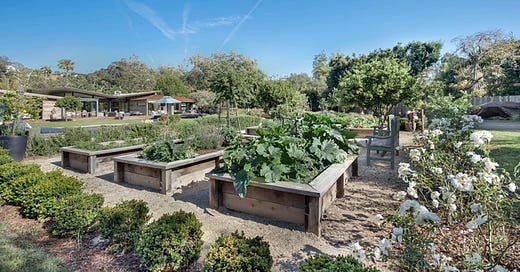Imagine walking out your kitchen door and picking huge leaves off kale plants so tall that they look like mini palm trees. Zucchini and tomatoes pile up on your countertops, and fresh-picked chives, often so expensive and difficult to find in stores, are just a matter of visiting the pot on your balcony. You have so much lettuce that you’re giving it away. Such is the life of a home gardener.
With a little bit of knowledge and a lot of practice, it’s possible to grow much of your food. Even apartment dwellers can reap the benefits of container-grown herbs and vegetables. Growing food can beautify your surroundings, reduce your carbon footprint, provide a creative and active outlet, and increase your access to nutritious food. Gardeners reap the benefits of a world of delicious and colorful produce that takes local and seasonal eating to a new level, including things like fresh-picked peas, tomatoes, arugula, cucumbers and blueberries that taste better than anything you can buy in stores.
Many people want to grow their own food but don’t know where to start. Vegetable gardening is a learning process. And as with any art form, you’ll never truly master it. Yet with a few simple principles and a willingness to learn from your mistakes, you can grow food — whether it’s a pot of basil on your windowsill or a full-scale backyard farm. Trying to decide if you should grow vegetables this year? Here are some things you should know first.
1. You Don’t Need a Garden
One of the most important things to remember before growing your own food is that you don’t need a large back garden to reap the benefits. Your windowsill can work just as well, and if you have shady space, salad greens can grow well. While it’s an advantage to have plenty of outdoor space, you can still grow tasty food from other areas of your home.
2. Anyone Can Grow Food
If you don’t have a big, sunny backyard, take heart: You can still grow food. A balcony or even a windowsill will work. If your space is shady, most salad greens, and even blueberries, can grow well.
3. Start Small
Gardening is a skill that takes time to learn. If you’re new to growing food, start with just a few potted herbs or one raised bed. Embrace mistakes and don’t beat yourself up if you lose a crop to slugs. Gardening is a forgiving practice: You can always begin again.
4. Good Soil is Key
Don’t expect results from your yard’s existing soil. To grow vegetables, you need rich soil with lots of nutrients.
Before planting anything, get the best soil you can find, preferably organic. If you’re working with a full-size yard, find a soil supplier in your area and arrange a delivery. For container gardens, you’ll want a good-quality potting mix.
To keep your soil fertile year after year, you’ll need to add compost every spring.
5. Gardening Takes Time
You can’t just plant seeds once at the beginning of the year and walk away. Gardens thrive with weekly planting, thinning, weeding, harvesting and pruning, and may need to be watered as often as twice a day if you’re in a hot climate. When planning your garden, take your schedule into account. A full backyard may need up to 10 hours of work a week, while a small balcony can get by with only a couple of hours.
6. You Can Grow a Lot of Food
With just six 8-by-4-foot raised beds in a sunny backyard, you can easily feed a family of four all the kale, tomatoes, carrots and greens you could possibly eat without having to go to the store, plus enough extras to freeze or can for the winter. If your space is smaller, a collection of medium-size planter boxes can keep you supplied with the salads you need.
The benefits of gardening are immense. Growing food is a fascinating hobby, an effective stress reliever and a surprisingly good workout — just watch your back when it comes to digging. Growing a significant portion of the vegetables your family eats, or even all your vegetables, is more attainable than most people realize. By starting small, setting aside time each week for garden maintenance and not getting discouraged if things don’t go perfectly, you’ll be well on your way to garden success.
That’s for today’s post, in future I will bring you more things to do such as_
How to do gardening in small spaces?
Which crops are good for gardening?
Beginners guide to growing your own food A to Z
and more. Subscribe to my Newsletter to get updated.
Also read:






Thank you for the info., and for what you’re doing!